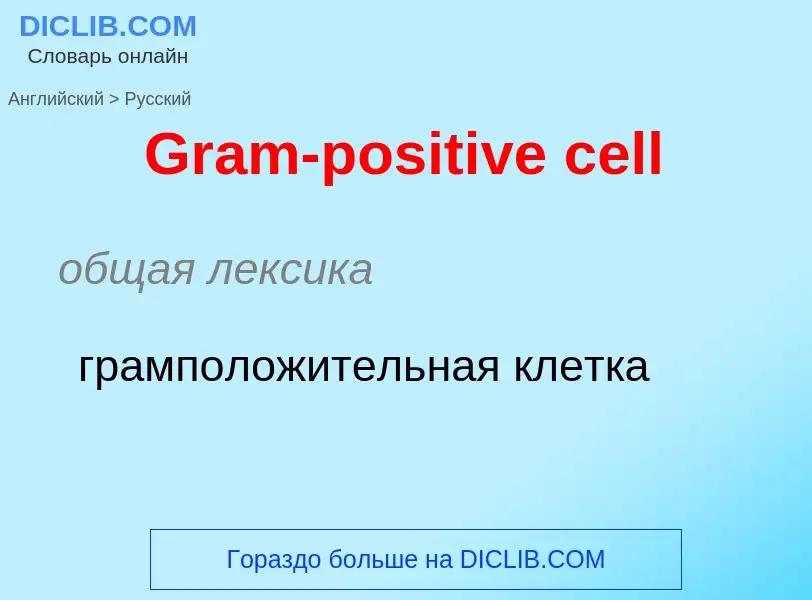Translation and analysis of words by ChatGPT artificial intelligence
On this page you can get a detailed analysis of a word or phrase, produced by the best artificial intelligence technology to date:
- how the word is used
- frequency of use
- it is used more often in oral or written speech
- word translation options
- usage examples (several phrases with translation)
- etymology
Gram-positive cell - translation to russian
общая лексика
грамположительная клетка
медицина
грамположительный
медицина
грамположительные бактерии
Wikipedia

In bacteriology, gram-positive bacteria are bacteria that give a positive result in the Gram stain test, which is traditionally used to quickly classify bacteria into two broad categories according to their type of cell wall.
Gram-positive bacteria take up the crystal violet stain used in the test, and then appear to be purple-coloured when seen through an optical microscope. This is because the thick peptidoglycan layer in the bacterial cell wall retains the stain after it is washed away from the rest of the sample, in the decolorization stage of the test.
Conversely, gram-negative bacteria cannot retain the violet stain after the decolorization step; alcohol used in this stage degrades the outer membrane of gram-negative cells, making the cell wall more porous and incapable of retaining the crystal violet stain. Their peptidoglycan layer is much thinner and sandwiched between an inner cell membrane and a bacterial outer membrane, causing them to take up the counterstain (safranin or fuchsine) and appear red or pink.
Despite their thicker peptidoglycan layer, gram-positive bacteria are more receptive to certain cell wall–targeting antibiotics than gram-negative bacteria, due to the absence of the outer membrane.


![Colonies of a gram-positive pathogen of the oral cavity, ''[[Actinomyces]]'' sp. Colonies of a gram-positive pathogen of the oral cavity, ''[[Actinomyces]]'' sp.](https://commons.wikimedia.org/wiki/Special:FilePath/Actinomyces spp 01.jpg?width=200)

![bacilli]] bacilli]]](https://commons.wikimedia.org/wiki/Special:FilePath/Gram stain 01.jpg?width=200)
